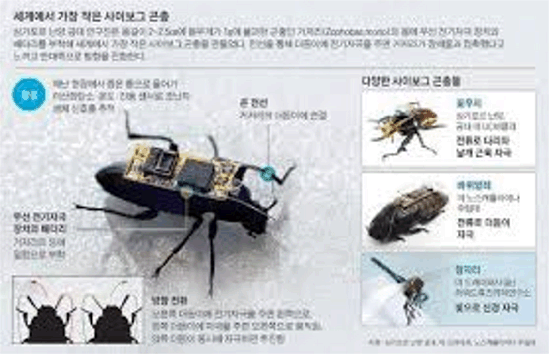Sophie Johnson, ABC Asia 제공주제: 식단 및 영양4시간 전도쿄에서 맥도날드의 빅맥을 즐기는 일본 청소년들
서구 음식은 아시아에서 점점 더 인기를 얻고 있습니다. (Reuters: Eriko Sugita)
아시아 전역에서 점점 더 많은 사람들이 서구 음식을 먹고 있으며, 이는 주로 세계화와 소득 증가에 따른 것입니다.
수요가 많은 제품을 생산하려면 고품질 곡물이 필요하지만, 이 지역은 수확량 잠재력이 제한되는 농업적 어려움에 직면해 있습니다.
다음은 무엇일까요?
호주 곡물 생산자들은 서구 음식의 인기가 증가함에 따라 이러한 시장에 공급할 기회가 있습니다.
남아시아와 동남아시아 사람들의 식습관은 상당한 변화를 겪고 있습니다.
서구 패스트푸드 체인점이 영역을 확대하고 가처분 소득이 증가함에 따라 이 지역 전역에서 더 많은 사람들이 전통적인 식단에서 벗어나고 있습니다.
이러한 변화는 단순히 지역 음식 문화를 재편하는 것이 아니라 호주 곡물에 대한 수요를 증가시켜 호주를 남아시아의 진화하는 시장에 대한 주요 공급업체로 자리매김하고 있습니다.
서양식 식단이 점점 더 인기를 얻고 있는 이유는 무엇일까요?
아시아 지역 전체에서 서양 음식의 인기 증가는 주로 세계화에 의해 주도되었습니다.
아시아 사회 정책 연구소의 남아시아 이니셔티브 책임자인 파르와 아머는 파키스탄에서 자랐으며 국제 프랜차이즈 덕분에 서양 음식을 쉽게 접할 수 있게 되었다고 말했습니다.
사람들이 미국 패스트푸드 체인점 셰이크 쉑의 베이징 1호점 오픈일에 음식을 주문하고 있습니다.
세계화는 아시아에서 서양 음식의 인기에 기여했습니다. (Reuters: Thomas Peter)
“어린 시절에 맥도날드가 처음 문을 열거나 피자헛이 문을 열었을 때 매우 기뻤을 겁니다.”라고 그녀는 말했습니다.
집에서 만든 식사가 남아시아 가정에서 여전히 중요한 위치를 차지하고 있음에도 불구하고 편의성의 매력이 식단을 재편하고 있으며, 특히 도시에서 그렇습니다.
패스트푸드와 가공 간식은 젊은 세대의 필수품이 되었습니다.
“점진적인 변화였고, 시간이 지나면서 서양 음식이 일상 생활에 더 많이 자리 잡았습니다.”라고 그녀는 말했습니다.
경제 성장도 또 다른 원동력입니다.
“또한 가족 중 더 많은 구성원이 분만에 들어가는 것을 보았습니다. 물론 여성들이 더 많이 일하고 있기 때문에 소득이 약간 더 증가했습니다. 구매력 평가가 증가했습니다.”라고 Aamer 씨가 말했습니다.
“따라서 수요와 소비도 증가했습니다.”
가처분 소득이 증가하고 생활 방식이 더 바빠지면서 사람들은 더 자주 외식하고 집에서 서양식 식사를 식단에 통합하고 있습니다.
인도 뭄바이의 한 시장에서 촬영된 켄터키 프라이드 치킨(KFC) 레스토랑.
패스트푸드의 편리함이 점점 더 매력적이 되고 있습니다. (Reuters: Shailesh Andrade)
호주에서 곡물 수입
서구식 식습관이 자리 잡으면서 아시아의 수입 곡물 의존도가 높아지고 있습니다.
라보뱅크의 곡물 및 유지종자 분석가인 비토르 피스토이아는 이러한 추세가 분명하다고 말합니다.
“가장 큰 이유는 이들 국가의 인구가 빠른 속도로 증가하고 있으며 식단을 바꾸고 있기 때문입니다. 이들은 고기와 패스트푸드를 더 많이 섭취하는 서구식 식단으로 이동하고 있습니다.”라고 그는 말했습니다.
“해당 국가의 경우, 그 길을 선택한다면 환경적 제약이 있기 때문에 더 많이 수입해야 할 것입니다.
“호주의 수출이 앞으로 3년, 5년, 10년 안에 기세를 회복할 수 있는 기회입니다.”
곡물이 빈으로 하역되고 있습니다.
아시아가 서구식 식단으로 전환하면서 호주 곡물 농가에 새로운 기회가 열릴 수 있습니다. (ABC Great Southern: Sophie Johnson)
그는 남아시아와 동남아시아가 부적합한 기후, 토양 조건, 제한된 농경지 등 고품질 곡물을 생산하는 데 어려움을 겪고 있다고 말했습니다.
이로 인해 밀과 보리와 같은 주요 곡물의 국내 생산이 어려워져 이러한 아시아 국가의 수입 의존도가 높아집니다.
호주는 이러한 증가하는 수요를 공급하는 데 여러 가지 이점이 있습니다.
“우선, 우리는 다른 국가가 가지고 있지 않은 이점이 있습니다. 우리는 그 지역에 가장 가까운 수출국입니다.”라고 피스토이아 씨는 말했습니다.
“바다에서 며칠만 보내면 배는 베트남이나 말레이시아에 도착할 수 있습니다.”
물류적 이점 외에도, 호주는 아시아의 식단 요구 사항에 맞는 고품질 밀과 콩류를 생산하며, 사료용 곡물로 동물 생산을 지원합니다.
피스토이아 씨는 남아시아와 동남아시아 국가들이 서구식 식단에 가까워지면서 쇠고기와 같은 동물성 단백질이나 계란을 포함한 동물성 제품의 소비가 증가할 가능성이 매우 높다고 말했습니다.
따라서 사료용 곡물도 수입해야 할 것입니다.
가축들이 사료 공급장에서 줄을 서서 사료통에서 먹는 모습.
사료용 곡물에 대한 수요도 증가할 수 있습니다. (제공: Australian Lot Feeders’ Association)
채식주의와 식물성 식단의 인기가 높아지면서 병아리콩과 렌즈콩과 같은 대체 단백질 공급원에 대한 수요도 증가하고 있습니다.
“인도의 관세 철폐 결정과 나쁜
피스토이아 씨는 “지난 3년 동안 수입이 크게 늘었습니다.”라고 말했습니다.
“더 많은 렌즈콩, 완두콩, 병아리콩을 수입해야 합니다.”
호주 농부와 수출업체에게 이러한 변화는 무역 관계를 강화할 수 있는 기회를 제공합니다.
“인구 증가, 1인당 GDP 증가, 식단 변화로 호주 곡물 생산업체에 수익성 있는 기회가 생겼습니다.”라고 피스토이아 씨는 말했습니다.
RaboResearch 곡물 및 유지 종자 분석가 비토르 피스토이아의 헤드샷.
비토르 피스토이아는 호주가 아시아에 판매하는 데 전략적 이점이 있다고 말했습니다. (제공: Rabobank)
서구식 식단 변화로 인한 식량 안보 우려
식단이 진화하고 곡물 수요가 증가함에 따라 아머 씨는 이것이 식량 안보에 어떤 의미를 가질 수 있는지 우려하고 있습니다.
“이 지역의 식단 패턴의 미래를 살펴보면 얼마나 지속 가능한지 보아야 합니다.”라고 그녀는 말했습니다.
이 과제는 다면적입니다.
남아시아는 세계에서 가장 빠르게 성장하는 인구 중 일부가 있는 곳입니다. 세계는 식량 공급에 엄청난 압박을 가하고 있습니다.
기후 변화는 농업 생산을 더욱 복잡하게 만들고 있으며, 예측할 수 없는 기상 패턴, 가뭄 및 홍수는 염분으로 인해 주요 지역 작물 수확량과 어류 자원을 위협하고 있습니다.
동시에 인플레이션으로 인해 기본 식품 가격이 상승하여 많은 저소득 가구가 영양가 있는 식사를 할 수 없게 되었습니다.
“과일, 채소, 콩류, 이 모든 것이 수년에 걸쳐 인플레이션 압력으로 인해 정말 비싸졌습니다.”라고 Aamer 씨가 말했습니다.
“우크라이나 갈등이 발생했을 때 통계적 의문이 제기되었는데, 그 중 하나는 에너지 가격뿐만 아니라 식품 가격, 곡물 등에 대한 인플레이션 압력이었습니다.”
서구식 식습관이 인기를 얻고 있지만 장기적으로 구매할 수 있는 여력이 여전히 우려 사항입니다.
각 식단의 비용을 비교해보면, 일부 국가에서 외식할 때 서구식 식단은 현지 아시아 요리를 즐기는 것보다 하루에 평균 18달러 더 비쌉니다.
“저렴함 측면에서, 저는 남아시아에서 서양식 식단이 저렴하지 않을 것이라고 생각합니다. 특히 수입품이라면요.”라고 그녀는 말했습니다.
아침 뉴스 브리핑을 이메일로 받아보세요
ABC NewsMail을 구독하면 오늘 밤의 긴급 뉴스와 하루를 형성할 스토리에 대한 정보를 받아볼 수 있습니다.
귀하의 정보는 ABC 개인정보 수집 정책에 따라 처리됩니다.
이 사이트는 reCAPTCHA로 보호되며 Google 개인정보 처리방침과 서비스 약관이 적용됩니다.
이메일 주소
ozilbo07@gmail.com
구독
4시간 전 게시
South and South-East Asia’s shift to a Western diet could drive demand for Australian grain
By Sophie Johnson for ABC Asia
4h ago4 hours ago
In short:
More people across Asia are eating Western food, largely driven by globalisation and higher incomes.
High-quality grains are needed to produce the in-demand products, but the local region faces agricultural challenges, limiting yield potential.
What’s next?
Australian grain producers have an opportunity to supply these markets as the popularity of Western food grows.
abc.net.au/news/why-are-asians-shifting-towards-a-western-diet/105123354
Link copiedShare article
The dietary habits of South and South-East Asians are undergoing a significant transformation.
As Western fast food chains expand their reach and disposable incomes rise, more people across the region are shifting away from traditional diets.
This transition isn’t just reshaping local food cultures — it’s fuelling a growing demand for Australian grain, positioning the country as a key supplier to South Asia’s evolving markets.
Why is the Western diet becoming more popular?
Across the Asian regions, the increased popularity of Western food has been driven largely by globalisation.
Farwa Aamer, director of South Asia Initiatives at the Asia Society Policy Institute, grew up in Pakistan and said international franchises had made Western food easily accessible.
“You were pretty excited as children when McDonald’s first opened up or Pizza Hut was opened up,” she said.
Despite home-cooked meals remaining central to South Asian households, the appeal of convenience is reshaping diets, particularly in cities.
Fast food and processed snacks have become a staple for younger generations.
“It was a gradual change, and over time, Western food became more embedded in daily life,”
she said.
Economic growth is another driver.
“You’ve also seen more members of the household going into labour — women are working more, of course, so there’s a little bit more sort of income rise. Your purchasing power parity has increased,” Ms Aamer said.
“Hence, the demand and consumption have also increased.”
With more disposable income and busier lifestyles, people are eating out more frequently and incorporating Western-style meals into their diets at home.
Importing grain from Australia
As Western eating patterns take hold, Asia’s reliance on imported grains is increasing.
Vitor Pistoia, a grains and oilseeds analyst at Rabobank, says the trend is clear.
“The main reason is because those countries’ populations are growing at a strong pace and they are changing their diets. They are moving to more Western diet style with more meat, more fast food,”
he said.
“For those countries, if they choose to go to that path, they will need to import more because they have some environmental limitations.
“It’s an opportunity in the coming three, five, 10 years for Australian exports to pick up momentum.”
He said South and South-East Asia face challenges in producing high-quality grains, including unsuitable climates, soil conditions and limited farmland.
This makes domestic production of key grains like wheat and barley difficult, increasing dependence on imports for these Asian countries.
Australia has several advantages in supplying this growing demand.
“First of all, we have an advantage that other countries don’t have — we are the closest exporting nation to that region,” said Mr Pistoia.
“A few days in the sea and the vessel can reach Vietnam or Malaysia.”
In addition to logistical advantages, Australia produces high-quality wheat and pulses that align with Asian dietary needs, as well as supporting animal production with feed grain.
Mr Pistoia said that as South and South-East Asian countries moved closer to a Western diet, they were very likely to increase the consumption of animal proteins such as beef, or animal products including eggs.
Therefore, they will also need to import feed grains.
The growing popularity of vegetarian and plant-based diets is also driving demand for alternative protein sources, such as chickpeas and lentils.
“Legumes have picked up quite a lot of interest following India’s decision to remove tariffs and their bad seasons over the last three years,” Mr Pistoia said.
“They need to import more lentils, peas and chickpeas.”
For Australian farmers and exporters, this shift presents an opportunity to strengthen trade relationships.
“The growing population, increasing GDP per capita, and shifting diets present a lucrative opportunity for Australian grain producers,” said Mr Pistoia.
Food security concerns with Western diet shift
With diets evolving and demand for grains rising, Ms Aamer is concerned for what this could mean for food security.
“When you look at the future of dietary patterns in this part of the world, you have to see how sustainable they are,” she said.
The challenge is multifaceted.
South Asia is home to some of the fastest-growing populations in the world, putting immense pressure on food supplies.
Climate change is further complicating agricultural production, with unpredictable weather patterns, droughts and floods threatening staple local crop yields as well as fish stocks due to salinity.
At the same time, inflation has driven up the cost of basic food items, making nutritious meals increasingly out of reach for many low-income households.
“Fruits, vegetables, your pulses, all of these have, over the years, because of inflationary pressures, become really expensive,”
Ms Aamer said
“When the Ukraine conflict happened, you kind of had a string of statistical questions, one of them being sort of inflationary pressures not only on energy prices, those on food prices, you know, grains and all became expensive.”
While Western food habits gain traction, long-term affordability remains a concern.
Comparing the cost of each diet, when eating out in some countries, the Western diet costs on average $18 more per day than enjoying local Asian cuisine.
“In terms of affordability, I don’t think that the Western diet will be affordable in South Asia, especially if it’s imported,” she said.
Get a morning news briefing in your inbox
Subscribe to our ABC NewsMail bringing you breaking news from overnight, plus a heads-up on the stories that will shape your day.
Your information is being handled in accordance with the ABC Privacy Collection Statement.
This site is protected by reCAPTCHA and the Google Privacy Policy and Terms of Service apply.
https://www.google.com/recaptcha/api2/anchor?ar=1&k=6LcNjL8lAAAAAB3chG8dvYH2LKi33r9xFw0kihjQ&co=aHR0cHM6Ly93d3cuYWJjLm5ldC5hdTo0NDM.&hl=ko&type=image&v=hbAq-YhJxOnlU-7cpgBoAJHb&theme=light&size=invisible&badge=bottomright&cb=ezjfczcr8ft8Email addressSubscribe
Posted 4h ago










